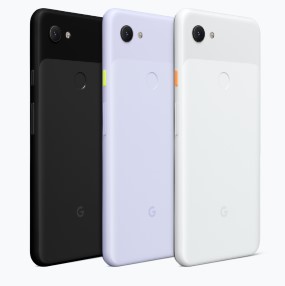
Apple is Silicon Valley’s’ most iconic tech hardware company, but it’s getting some stiff competition from Google.
Google made a slew of product announcements at its annual Google I/O developers conference in Mountain View on Tuesday, including a relatively low-cost Android phone and a new video hub for the home.
The star of the show was the Pixel 3a, a slightly downgraded version of its high-end Pixel 3 phone, at a much lower price point. The Pixel 3a comes in two sizes. For $399, you get one with a 5.6-inch display while $479 buys one with a 6-inch display. By comparison, the Pixel 3, which was introduced late last year, starts at $799 for the 5.5 inch-model and $899 for the 6.3-inch version, putting the new phone at about half the price of the high-end model. The least expensive iPhone X (the Xr) costs $749.
After one day of testing the 3a, I can say that in many ways, it’s just as good as the higher-cost models. It runs the same Android software and, like all phones from Google, it’s pure Android without unnecessary and often burdensome add-on features. And, because it’s a Google phone, Pixel owners are the first to get new versions of Android, while other phone users may not get the latest update for months, years or ever.
Unlike the flagship Pixel 3, the 3a isn’t water resistant, and it doesn’t have wireless charging capabilities. It also has a slower processor, but I didn’t notice any difference in performance between it and the more expensive Pixel 3 that I’ve been using for the last few months. The 3 also lacks the Pixel 3’s second wide-angle front-facing (selfie) camera.
Although the 3a doesn’t come with wireless earbuds, it does have a 3.5 mm headphone jack, which means it will work with thousands of legacy headphones, earbuds and external speakers. I know people who have held-off buying new iPhones or Android phones because they really wanted that headphone jack. The 3a also doesn’t have that big notch on top like the 3 and the newest iPhones. I’m not bothered by the notch (which takes away from screen real estate) but some people hate it.
The more expensive Pixel 3 has had sluggish sales, partially because it’s only offered by Verizon in the United States while the iPhone and Samsung’s flagship phones are available from just about all carriers. The 3a will be available from Verizon, T-Mobile, Sprint and U.S. Cellular. Like the Pixel 3, you can buy it directly from Google for use on AT&T or almost any other carrier in the world. That wider availability, plus much lower price tag could make Google a bigger threat to Apple, Samsung and other phone makers.
Other hardware
In 2014, Google acquired Nest, which started out with a smart thermostat and smoke detector but later expanded into other products, including home security cameras. But Google is now using the Nest brand for a suite of home products, including its smart doorbell, door locks, and the Nest Hub Max that it introduced at Google I/O.
The $229 Nest Home Max combines a video conferencing system with a smart speaker and display. Like the Amazon Echo and Google Home, you can use your voice to ask it questions, but, because it has a screen, you don’t just hear the answers, you see them, such as recipes or weather, throughout the day. You can also watch YouTube, including live TV if you have YouTube Live subscription. The hub lets you view your photographs from Google Photos and the camera can be used as a security camera in your home as well as for video conferencing and sending video messages. And its speaker can be used to play music from a variety of services including Pandora and Spotify. Like other smart speakers and displays, you can connect it to smart home services to control lights, lock doors and adjust your thermostat.
More hardware products than Apple
These new products take their place with others on the Google online store to form a pretty impressive set of hardware offerings from a company that isn’t even primarily a hardware company. In fact, Google now has a larger set of hardware offerings than Apple, which is a hardware company, although Apple is also very good when it comes to software, especially its iOS and Mac operating systems.
And Google’s products are typically less expensive than Apple’s, especially when you compare the new Pixel 3a to any iPhone. Even the 3-year-old iPhone 7 costs $50 more than Google’s new Pixel 3a.
Apple doesn’t even offer a smart display and its smart speaker, the HomePad starts at $299, compared with as little as $29 for the Google Home Mini or Amazon Echo Dot. Sure, the sound quality of these low-end products don’t come close to the HomePad, but Amazon and Google offer higher-end smart speakers and the ability to connect their least expensive smart speakers to high-quality external speakers.
Both Google and Amazon also offer tablets that compete with the iPad. Apple’s tablets are arguably better and more advanced than the competition, but they are also a lot pricier. Whether that extra cost pays off depends on what you do with them. For simple tasks, like web surfing, reading and viewing video, it doesn’t really matter that much.
And, despite rumors about Apple hiring automotive engineers and testing vehicles, there have been no announcements of an Apple self-driving car. Google’s sister company Waymo is one of the leading contenders in this emerging market.
If I were Apple CEO Tim Cook, I’d be worried about Google. It may make most of its money through search advertising, but through acquisitions and ingenuity, it’s now a major competitor when it comes to hardware.
Disclosure: Larry Magid is the CEO of ConnectSafely.org, a non-profit internet safety organization that receives financial support from Google and other tech companies.